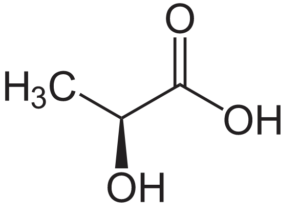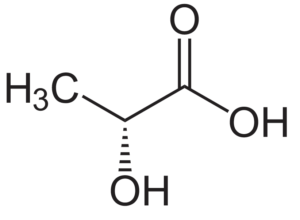RMS L+ for optimal metabolism and pH balance
We now know how important the gut microbiome, blood pH, mitochondrial cellular respiration and the protection of mitochondria, the energy powerhouses of our cells, are for our health. To maintain or regain our health, RMS L+ supports you exactly where it is needed – in the gut, blood, cells and intercellular space. The dextrorotatory lactic acid RMS L+ from Trimedea ensures healthy intestinal flora and promotes natural metabolic processes when taken regularly. As a result, the lactic acid RMS L+ alleviates many kinds of complaints – even acute symptoms in the throat, pharynx and lung area.
What is lactic acid, and how does it work?
The secret of RMS L+ lies in the balancing of the pH level of the blood and the manifold effects on our intestinal flora. Through the regular intake of high doses of L(+) lactic acid (at least 21%), the fermentation metabolism in the cells can be “switched” back to the oxygen-dependent metabolism. In the intestines, this leads to an increase in the performance of our friends and helpers – the microorganisms (the microbiome).
Advantages of RMS L+
- Improvement of natural metabolic processes
- Regulation and optimisation of pH levels of the blood and connective tissue
- Multiple positive effects on the microorganisms in the intestine
- Regulation of the acid-base balance
- Detoxification and intestinal cleansing
Fields of Application of RMS L+
- Metabolic disorders
- In case of high meat and sausage consumption
- Allergies and stress
- Symbiosis control after antibiotic therapy
- Beginning symptoms of “colds”/”infections”
- With chronic pain
- And for many other complaints …
RMS L+ is used against many civilisation ailments
Acidosis of the connective tissue is mainly caused by fermentation and putrefaction processes in the intestine and disturbed metabolic processes. One cause of this is our modern diet. The countless microorganisms in the intestine could work very effectively – like a compost heap that is stimulated to top performance with biological waste (without chemicals). However, if the microorganisms are given low-quality or chemically treated food every day, their activity and function is inhibited or even blocked.
An excessively protein-rich diet (high meat and sausage consumption) often leads to the formation of the poorly degradable and unhealthy levorotatory lactic acid with corresponding putrefaction processes and negative effects on the overall metabolism. In the long run, these fermentation and putrefaction processes change the microbiome – the composition of the intestinal bacteria – and thus affect our entire body.
RMS L+: The healthy versus the unhealthy lactic acid
There is clockwise and anticlockwise lactic acid. The designation comes from the fact that when the lactic acid is irradiated with polarised light, the light beam turns either to the left or to the right. Clockwise lactic acid is labelled L(+), anticlockwise lactic acid is labelled D(-). Every healthy person produces physiological L(+) lactic acid (left picture) in sufficient quantities. In a diseased body, however, the pathogenic (D-)-lactic acid (right picture) produced by fermentation predominates. This toxin cannot be broken down and excreted by itself. For this purpose, the same amount of dextrorotatory lactic acid is needed. One of the main properties of dextrorotatory lactic acid is that it corrects the pH in the blood towards the normal range. One result of the normalisation of the pH level in the blood is, among other things, the increased effect of enzymes and hormones.


The History of Lactic Acid
RMS L+ starts exactly where Dr. Dr. sc. nat. Paul Gerhardt Seeger established his innovative “cancer therapy” as early as 1938 in scientifically unique research work with lactic acid and phytoactive plant substances. Together with Dr. Johannes Kuhl (physician and cancer researcher 1903 – 1968), Dr. Seeger brought lactic acid to the attention of the medical public. In 1938, Dr. Seeger reported his research findings for the first time at the Robert Koch Institute in Berlin. He attributed the development of cancer cells (degeneration) to the destruction of important ferments and enzymes in the respiratory chain in the mitochondria. The results were soon confirmed by Ulf von Euler, who later won the Nobel Prize. In 1956, Seeger was appointed to the Humboldt University in Berlin. In almost ten years of work at the Charité hospital, he was able to experimentally confirm his theses of 1938.
Application:
For acute symptoms and complaints, take the calculated dose 3-4 times a day.
For intestinal rehabilitation take 1-2 times daily for at least 4-8 weeks.
Caution: Do not take the drops undiluted!
Dosage: Take 1 drop per 3kg body weight diluted in 100-200 ml water or tea, sip by sip.
- Under 15kg = 5 drops
- Under 30kg = 10 drops
- 50-60kg = 20 drops
- 80-90kg = 30 drops
Important information about RMS L+
Interactions:
Taking RMS L+ in combination with biologically high-quality food supplements improves their absorption and effect in the body.
Interactions with medicines are not known so far.
Storage:
Store in a cool, dry place, out of the reach of children.
Please note:
Do not exceed the recommended daily intake stated.
Do not use food supplements as a substitute for a balanced and varied diet and a healthy lifestyle.



